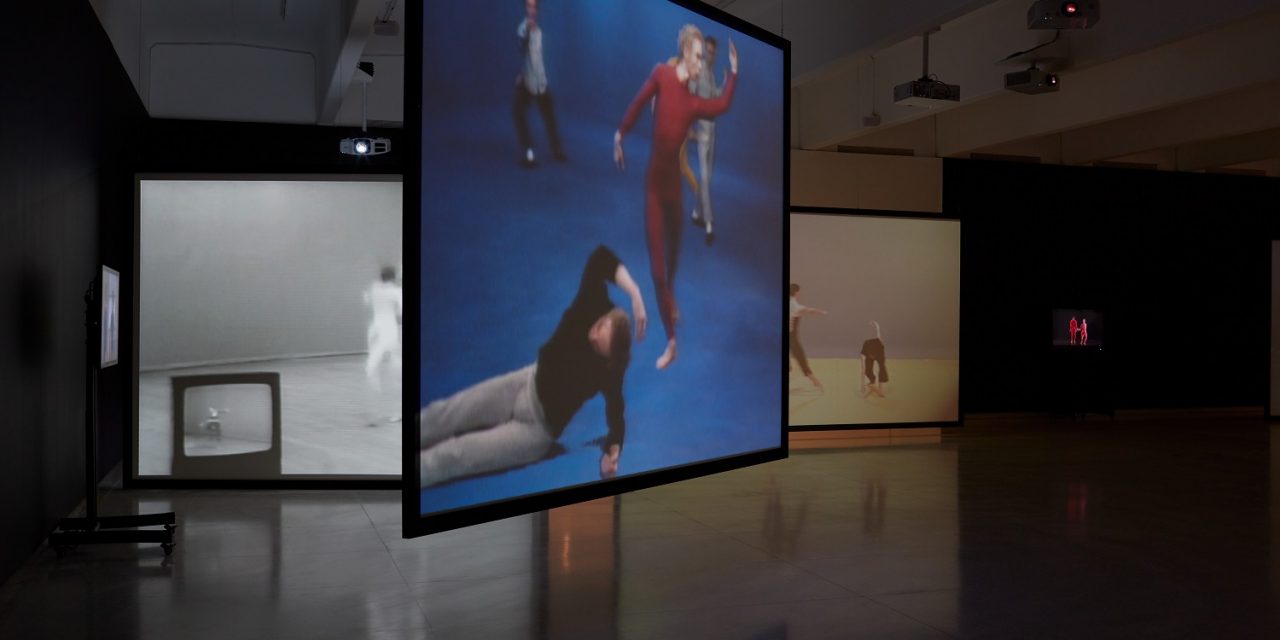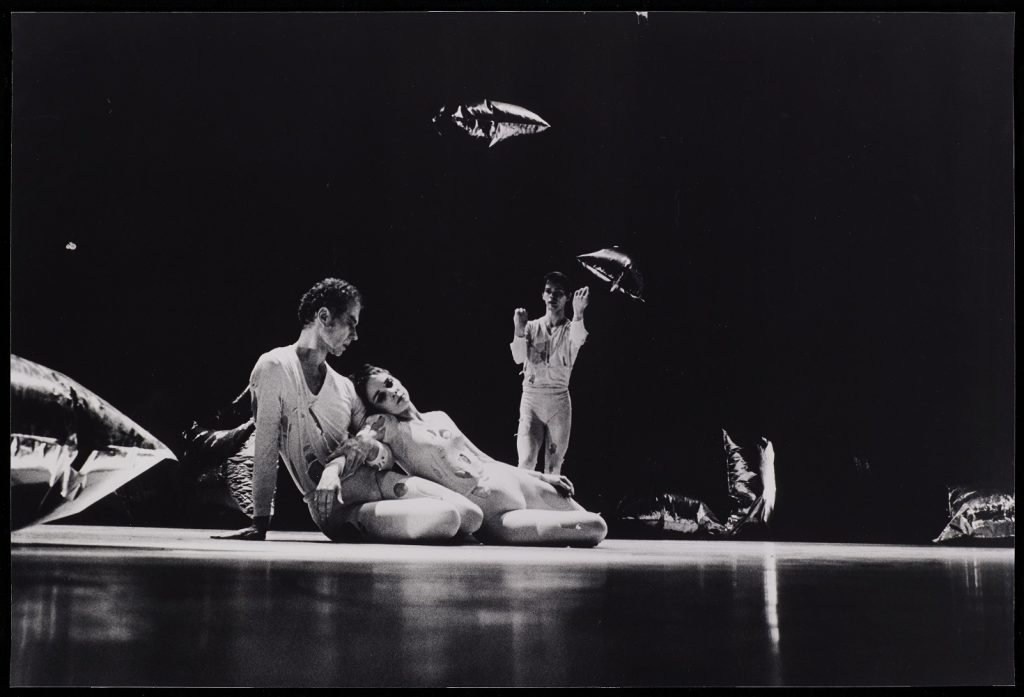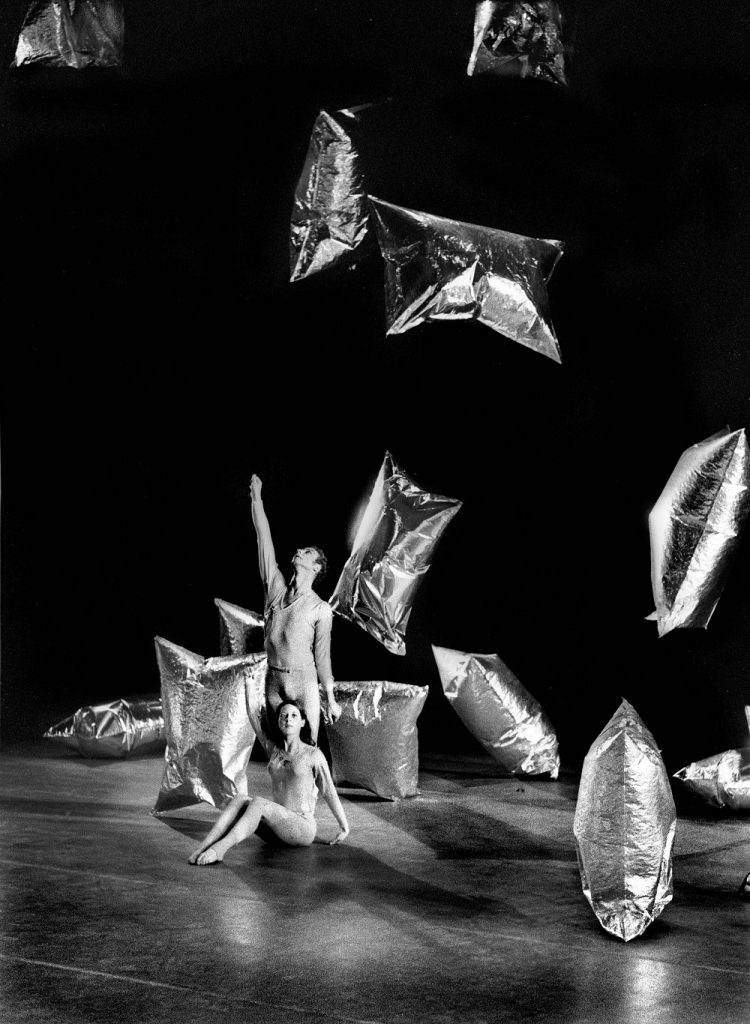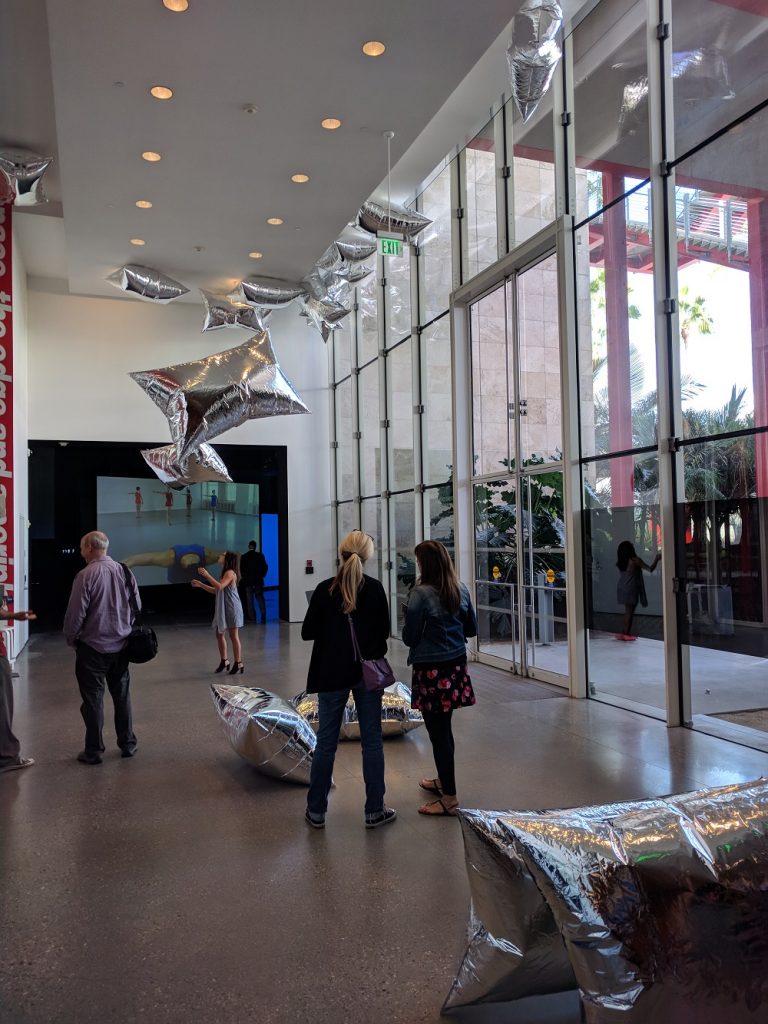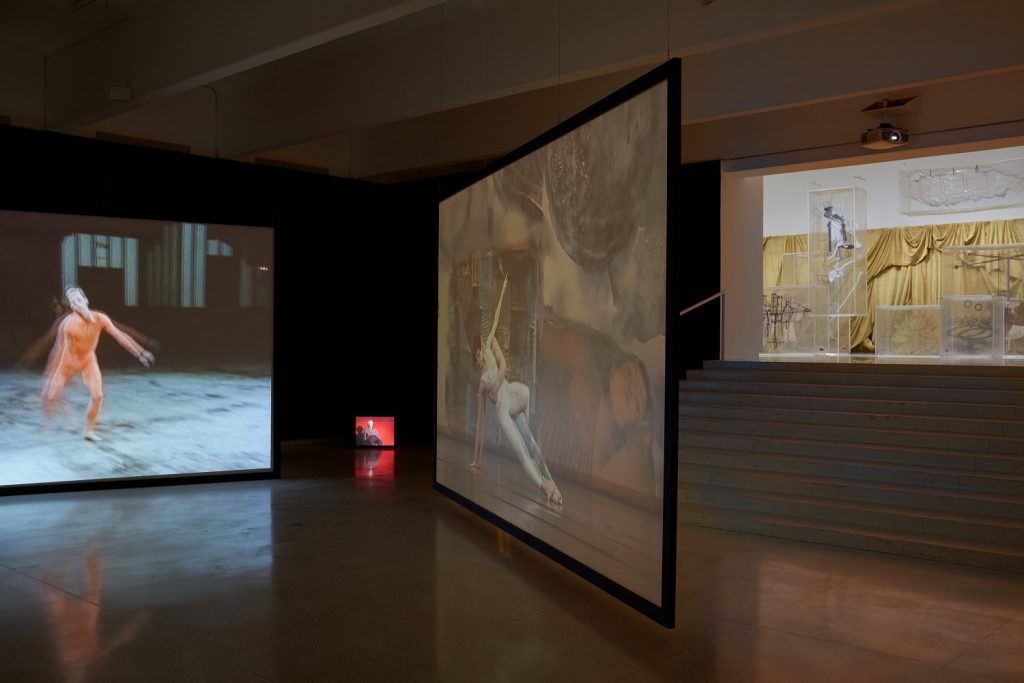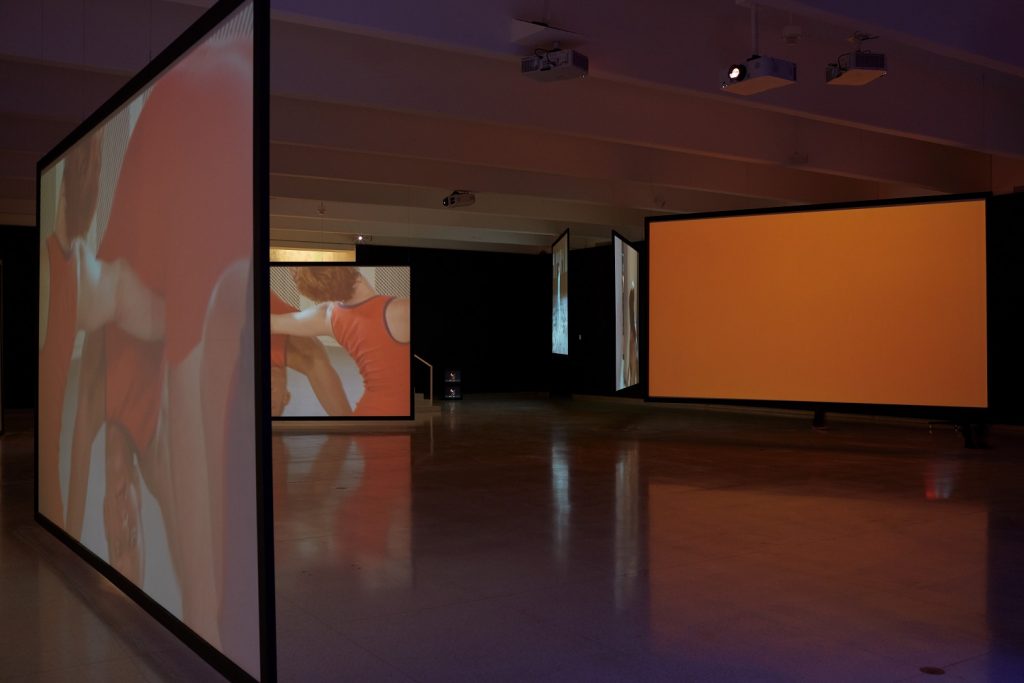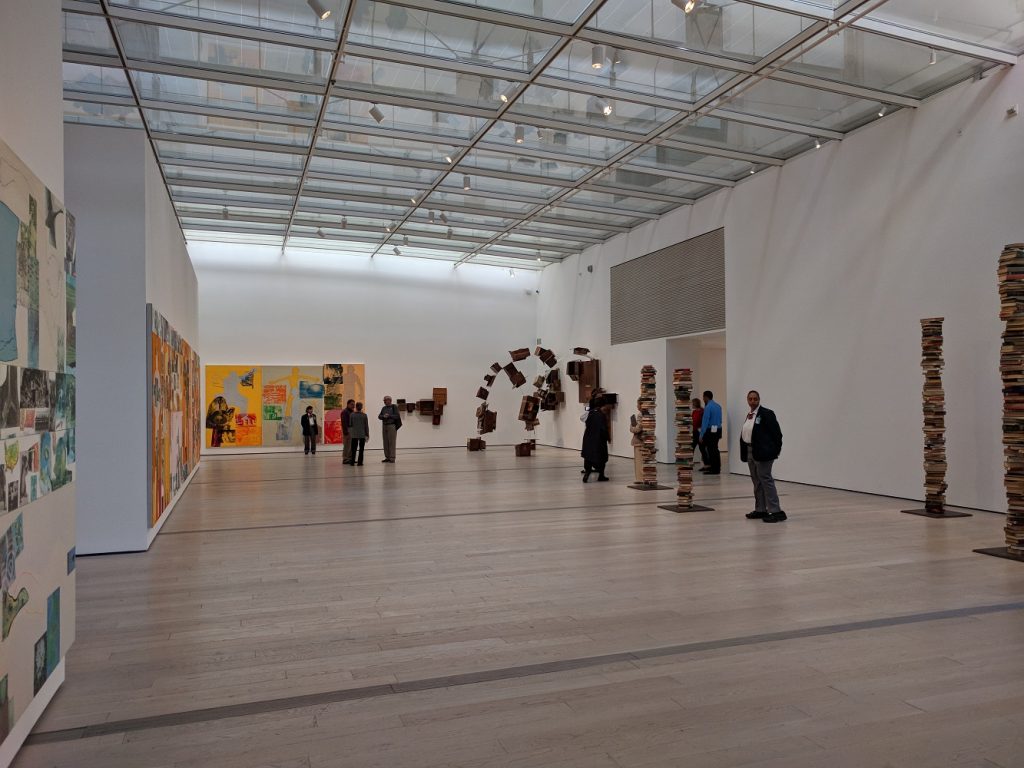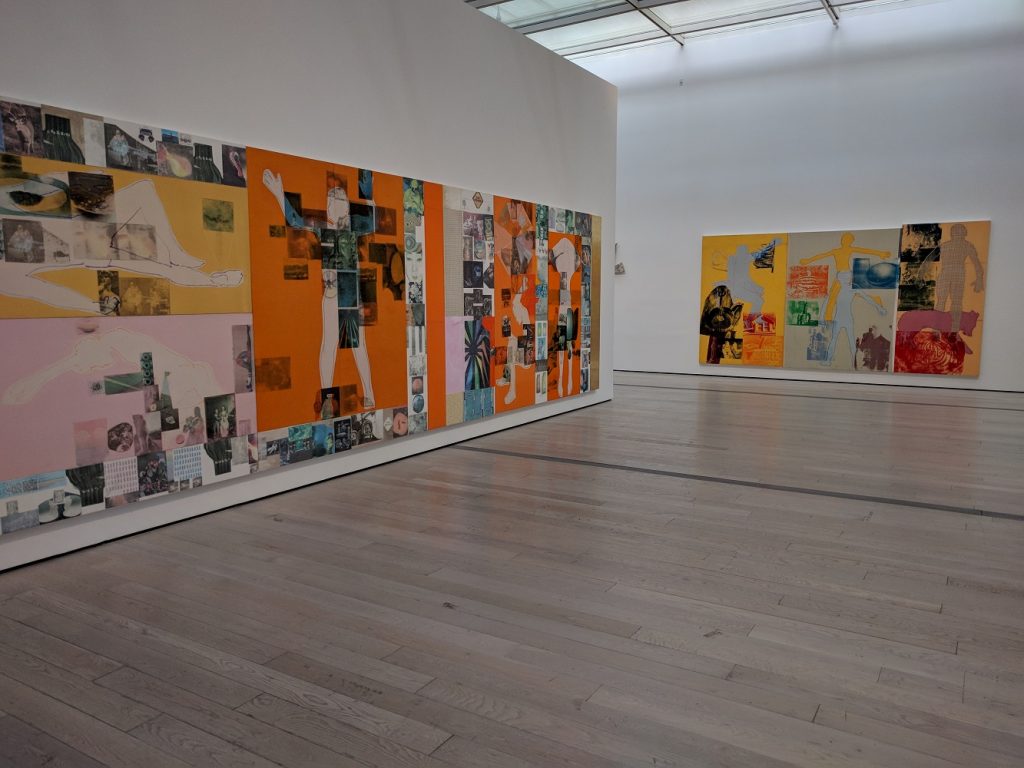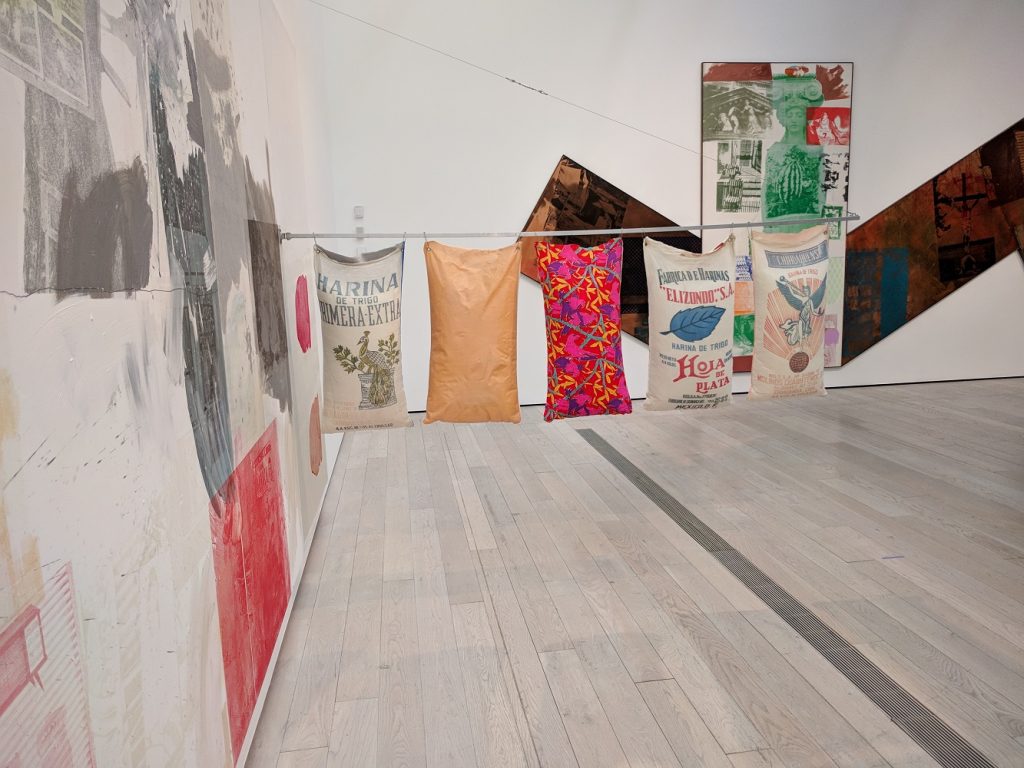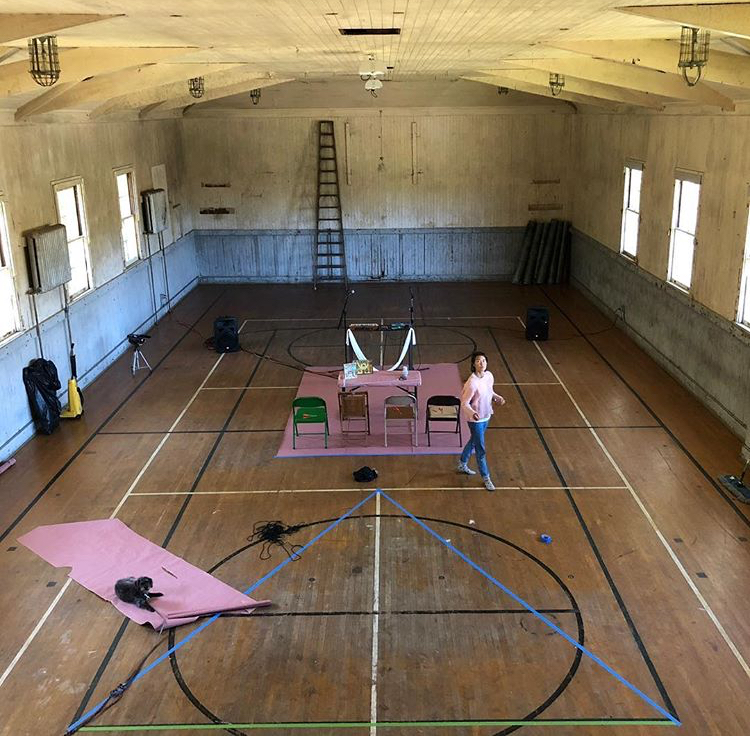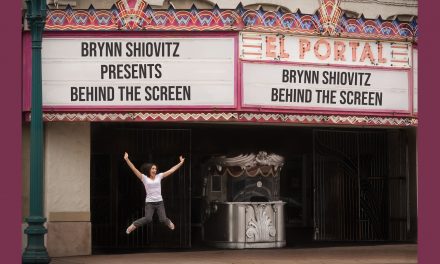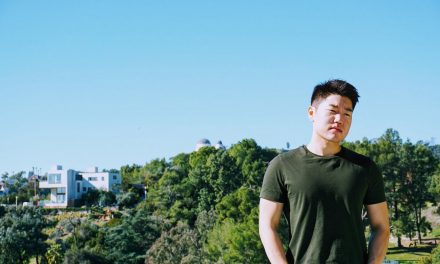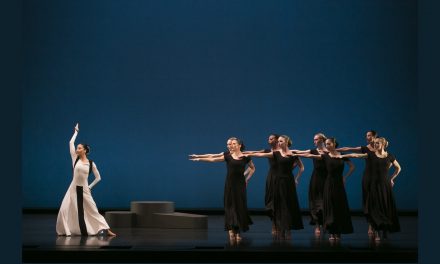Were he still alive, Merce Cunningham would be 100 years old on April 19, 2019. He was born in Centralia, WA, attended the Cornish School in Seattle, and was a member of the Martha Graham Dance Company for six years before branching out on his own with composer John Cage to become a leading and major force in modern dance. The Merce Cunningham Dance Company was founded in 1952 and had its last season two years after Cunningham’s death in 2009 when he was 90 years old.
In anticipation of the international celebration of Cunningham’s centennial, José Luis Blondet, curator of Special Initiatives at the Los Angeles County Museum of Art (LACMA), reached out to the Walker Art Center in Minneapolis to see if he could collaborate with them and acquire their exhibition titled Merce Cunningham: Common Time, a major survey of the artist’s collaborative projects organized by the Walker Art Center in 2017. They now house the archives of Merce Cunningham Dance Company’s sets and costumes. Blondet knew that the collection was too large to be exhibited at LACMA and so he reached out to other museums around Los Angeles to see if they would each present portions of the full exhibit. The other museums were unable to take part, so Blondet organized and curated the extraordinary exhibition titled Merce Cunningham, Clouds and Screens, located in BCAM, level 1 from October 28, 2018 through March 31, 2019
Born in Venezuela, Blondet became a professor at the School of Arts at the Universidad Central de Venezuela in Caracas and he worked at the Museum of Fine Arts, also in Caracas. In 2001, he relocated to New York to participate in the Bard College Curatorial program. Blondet went on to work at the Boston Center for the Arts and the Dia Art Foundation in New York under the direction of Michael Govan. Govan, now the Director at LACMA, recruited Blondet into his current position at LACMA.
My interview of Blondet took place at LACMA’s C+M (Coffee and Milk) café. He said that he was initially in charge of commissioning performance projects, helping to give an international profile to artists through performance. This was also an exciting way for Blondet to meet young artists working in and around Los Angeles. When I asked him if he was an artist, Blondet said no, but that he had worked as an actor. One acting job that he was honored to have had was working with Joan Jonas while he was at the Dia Art Foundation. Jonas is an American visual artist and a pioneer of video and performance art who was one of the most important female artists to emerge in the late 1960s and early 1970s.
Blondet had always been a fan of Visual Artist Charles Atlas’ work and thought that his piece titled MC⁹ should be part of the exhibition at LACMA. He feels that MC⁹, which anchors the exhibition, is not only a posthumous homage to Merce Cunningham, but that it is “really a good invitation to people who are not familiar with Merce Cunningham’s work, to really get into that fascinating, weird, odd, captivating, funny, clever and inventive world of Merce Cunningham.” He gave a wonderful analogy, stating that even if someone does not know anything about his work, that it was like diving into the pool of Merce Cunningham.
MC⁹ is short for “Merce Cunningham to the ninth power”. Atlas chose excerpts from 21 dance works for camera and video documentations that he had videotaped, and intermingled them “with graphics, color fields, and countdown leader.” There are brief photo shots of Merce Cunningham as a child, and excerpts from a video called Just Dancing that shows an aged Cunningham dancing while holding on to a portable ballet barre. Charles Atlas was one of the pioneers in dance film and video for more than 40 years, serving as in-house videographer for the Cunningham company from 1970 through 1983. Though Atlas left that position, he continued a close working relationship with Cunningham until his death.
As a former member of the Merce Cunningham Dance Company, I recognized a few of the works represented in Atlas’ MC⁹ and took the walk down memory lane by watching dancers that I know perform Cunningham’s work. There are nine screens in the exhibit and one only sees excerpts of each of the 21 works included in MC⁹. These clips move from screen to screen encouraging the viewer to move around the room to capture a glimpse of the Cunningham genius they represent.
Projected against two different walls in an adjacent gallery that displays the very large sculpture titled Double Band by American artist Richard Serra are two videos of a very different type. On one wall is projected Cunningham’s stunning Night Wandering (1958). Night Wandering was a duet for Cunningham and his long-time dance partner Carolyn Brown that I had the great fortune to see many times while working with the Cunningham company. It was choreographed to music by composer Swedish composer Bo Nilsson as compiled and performed by David Tudor. The costumes were designed by artist Robert Rauschenberg who also designed sets and costumes for Trisha Brown, Paul Taylor and his own productions.
Blondet told me that the video of Night Wandering in the exhibit is the second version of the dance. Rauschenberg did not design the costumes for the original version, but in spirit of the Cunningham tradition of using chance as a method of choreographing, by “chance” this was the only video that Blondet had of Night Wandering with costumes that were designed by Rauschenberg.
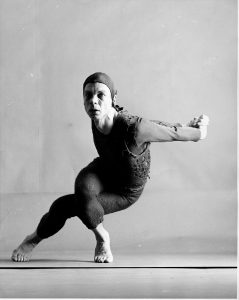
Merce Cunningham in Changeling, 1957 (studio photograph), photo by Richard Rutledge, courtesy the Merce Cunningham Trust
On the adjacent wall is a film that was just recently discovered in Germany. It is a solo choreographed and performed by Cunningham titled Changeling (1957 – filmed in 1958). Although the film is in black and white, the costume designed by Robert Rauschenberg was a brilliant red. This is a rare footage of Cunningham performing this work that was “concerned with the possibility of containment and explosion being instantaneous.” Cunningham “divided the body into parts—head, torso, arms, and legs—and listed all the possible movements for those segments. Using his infamous chance method, Cunningham then tossed coins to select the order in which these movements would appear. At the piano in this film is the musician, composer and Cunningham’s life partner, John Cage performing Christian Wolff’s Suite (1954) which was also a chance-based composition.
Floating around on different levels in the lobby that connects these two galleries are large Silver Clouds that were designed by Andy Warhol in 1966. Cunningham has seen Warhol’s exhibition that included the Silver Clouds and set about collaborating with Warhol to include them as the décor for his 1968 Rainforest choreographed to music by David Tudor, with costumes designed by Jasper Johns. Blondet explained during the press preview that the clouds had a mind of their own and refused to behave. At the preview the Silver Clouds were either moving around on the floor or floating about, attached to the ceiling. The LACMA staff had not yet discovered the right ratio of helium and air to put in the clouds to allow them to float in varying layers or levels.
Blondet explained that the Silver Clouds were provided by the Andy Warhol Foundation with instructions that the pillows would be destroyed at the end of each week, and this destruction process had to be documented on film. The Foundation would then provide LACMA with new pillows each week to ensure that they are presented to the public clean and shiny.
On another personal note, I performed in Rainforest for three years and so this was like a family reunion for me with the, what we in the company called pillows. During the performance, some of the pillows were attached to black string and held in place by small fish weights. The rest floated freely, and would often either follow the dancers around or, because of static electricity, attach themselves to us. The pillows therefore were more like additional performers to those of us onstage than just the décor.
On the floor above the exhibit Merce Cunningham, Clouds and Screens in BCAM, Level 3 is an amazing exhibition titled Rauschenberg: ¼ Mile, on view October 28, 2018 – June 9, 2019. When I asked Blondet if it was a coincidence that it is appearing at the same time as the Cunningham exhibit, he answered “Yes and No.” It was a separate project, and “we responded in a very Merce Cunningham way. It’s about common time.” It was decided to put the two exhibits in the same building at the same time. “They are two independent entities that co-exist in the same environment.
It took Robert Rauschenberg 17 years (1981-1996) to complete ¼ Mile. The title comes from the fact that the road leading up to the Rauschenberg home in Captiva, Florida. It was said at the press preview that this work was a kind of autobiography of Rauschenberg’s life and includes all the different techniques that he used in his work and makes references (and indeed includes) many of the artists and people who were important to him or influential in his artistic career. The work is spread out for a quarter mile, on several walls in a least four rooms of BCAM, Level 3. Some of the panels include Rauschenberg technique of using three-dimensional art, bags hanging, books piled into what he called Treasure Towers, and his well-known method taking ordinary objects like cardboard boxes, wooden chairs or empty water bottles and turning them into art. One could spend hours looking at these panels and still not see all the detail included.
In related programming at LACMA, Jennie MaryTai Liu will choreograph a new work in response to the exhibition. Blondet has long been an admirer of Liu’s work and invited her to choreograph a work inspired by the Cunningham exhibition. I spoke with Liu and she explained how much of her dance training had been in Cunningham technique with dance artist and teacher Brenda Daniels. Born in Korea, Liu received her degree in the Experimental Theatre Wing of New York University/TISCH. She has chose to put her research focus on Cunningham’s work titled Torse (1976), examining not only the dance but also Cunningham personal notes on how he used the I Ching to create the structure for Torse. She said that she chose to use the results of her research as the template for her new work in collaboration with her Sound Artist partner Andrew Gilbert.
The title of the exhibit uses the words Clouds and Screens. Liu is interested in how these terms have evolved since Cunningham first began creating work. One interesting fact that she told me was that the iCloud was launched on year after Cunningham’s death. Screens were used to project film and video or as decoration, but now, as Liu said, “We live inside them“. Meaning, of course, how our lives have become so dependent upon our computers and/or cell phones. She said that she is doing research on and investigating how present day artists are now using the iCloud computing and data storage to “organize and sort out their personal relationship to what seems like eternity and information of information, data and images.”
Liu moved to Los Angeles in 2012 because she felt that LA would offer her more inspiration and performance opportunities than New York. Her instincts have proven to be correct. The work that Liu is creating for the centennial will be performed in February of 2019 with the venue to be announced. We agreed that I would interview her for a more in-depth preview article in late January.
I also met with Ken Tabachnick, the Executive Director of the Merce Cunningham Trust. He was in Los Angeles for the opening of Merce Cunningham, Clouds and Screens at LACMA, as well as to meet with the different organizers participating in the celebration of the Cunningham Centennial. I will be providing more detail in a future article, but a brief outline of the events planned for 2018 and 2019 in LA include students at the Colburn School for a January and spring 2019 performance of Cunningham’s Scramble (1967), staged by former Cunningham company member Susanna Hayman-Chaffey; and former company member Holley Farmer working with students at Cal Arts this October/November teaching excerpts from Cunningham’s Canfield (1969) to be shown on campus in November and at REDCAT in early December. At the University of South California, former company member Silas Riener will stage a MinEvent for dance students of the Glorya Kaufman Dance Center to be performed in the fall of 2019.
One of the exciting events planned is what is called Night of 100 Solos on April 19, 2019, the date of Cunningham’s 100th birthday. As Tabachnick explained in an email to me, “It is 25 dancers in each city (New York, London and Los Angeles). Each city will have 100 solos chosen by the stager for that city. They are not actually simultaneous due to time zones, but each begins at 7:30pm that city’s local time. There is no set number of solos each dancer will learn, but it is on average 4. By design, the dancers are not former MCDC dancers. A good number of those alumni are working as stagers setting and coaching solos in one or more of the cities.” The event will be supervised by former company member Andrea Weber.
Jose Blondet explained how with the three elements of the exhibition, MC⁹, Silver Clouds, and the two videos Night Wandering and Changeling, that he wanted to show a range of the connection between Merce Cunningham and the moving image, and to show the viewer the choreography from the beginning to the end.
Merce Cunningham, Clouds and Screens opens to the public on October 28 and will be there through March 31, 2019 in BCAM, Level 1. More information, click here.
Rauschenberg: ¼ Mile also opens to the public on October 28, but will be on exhibit through June 9, 2019 in BCAM, Level 3. More information, click here.
For more information, LACMA hours and ticket prices, click here.
Featured image: Charles Atlas, MC⁹, 2012, Collection Walker Art Center; T. B. Walker Acquisition Fund, 2015, © Charles Atlas, photo by Gene Pittman, courtesy Walker Art Center, Minneapolis.

